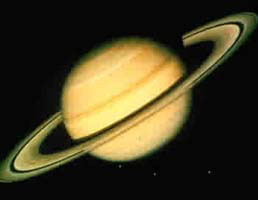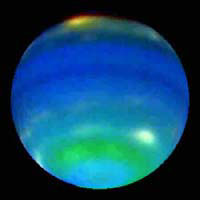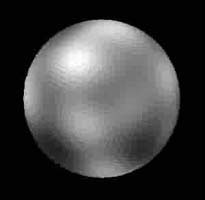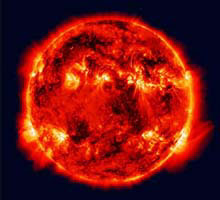|
GREETINGS, TERRANS!
CHECK OUT
WHAT'S NEW!
SIGN UP FOR
EARTH STAR'S
ON-LINE FICTION
WRITING COURSE
|
|
Welcome to Earth Star on the Web. Here you will find a wealth of articles on diverse topics including UFOs and extraterrestrials, the paranormal, healing, earth changes, spirituality, the latest sightings, channeling, astrology, book reviews, art, poetry, plus conference news and reports, and a whole lot more.
|
|
WHERE WOULD YOU
LIKE TO GO?
|

The Star Beacon: Earth Star's monthly paranormal newsletter. Subscription info can be found by clicking here.

BOOKS, T-SHIRTS, TAPES -- NEW!
Earth Star's Store features metaphysical, self-help, children's literature and adult fiction, plus original T-shirts and conference lecture tapes. Visit now by clicking here.

PSYCHIC READERS
The NEW Psychic Readers Directory lists Intuitive Counselors from all over. Check out who's doing what, and how to contact them, by clicking here.

THE BEST OF
THE BEACON
Selected articles which have appeared over the years in The Star Beacon
Click here.

CONFERENCES
Earth Star's annual Love and Light Conference. Also check out other conferences by clicking here.

FRIENDSHIP CLUB
Earth Star's Galaxy Wide Friendship Club is the place to find like-minded pen pals. Visit now by clicking here.

ART GALLERY
Earth Star's NEW Art Gallery features paintings by Ryan Ulrich plus an assortment of art (including extraterrestrial). Visit now by clicking here.

ARIZONA PAGE
Visit exotic and beautiful Why, Arizona. You can go there by clicking here.

MULES
Animal lovers will get a "kick" out of our Mule Page, featuring the Stucker Mesa Mules. Click here.
|
|
PUBLISHING
|
| Earth Star Publications offers book packaging services for self-publishing authors, as well as a lot more. Please see our List of Services. |
|
|
|
ADVERTISE HERE!
|
|
Advertise your wares or services here by placing an ad in The Star Beacon. To view CLASSIFIED ADS click here. For more information on advertising, e-mail us at UFOeditor@yahoo.com. For information regarding the Psychic Readers and Healers Directory, please e-mail earthstar@tripod.net. |
|
|
|
Your Solar System |
from the April 2004 Star Beacon

Sanni Ceto talks about Space
Part 2
by Commander Sanni Ceto
SATURN
Saturn is referred to as Saite, “the lovely one of many rings.” It’s a twin to Jupiter. If
Saite and Jupiter had become as hot as their parent Sun, they could have formed a three-star solar system around the inner planets of iron and rock.
Saite has a large multi-ring system around it; the largest pieces of rocks serving as probe bases to study its ever-changing atmospheric storms. It has a larger core than
Juippes and has a small iron center. Within this center Pleiadians placed a huge amplifier-type quartz crystal, inside its center, from pole to pole, to create balance between the gas planets and the inner solid planets.
The beings on Saite aren’t in body form but etheric, having come there from other worlds to experience life without a body, to learn of that experience. These beings can assume a body when they visit other worlds, so they can pass undetected from a planet’s natives.
Like Juippes, Saite has a large family of moons. Some serve as fueling stations for passing ships of the Orion and Zeti peoples, and others are used to mine resources and to grow crystal rods used in a ship’s propulsion system. Its largest moons serve as temporary way stations by visiting peoples who come into Earth’s solar system.
Saturn has 30 moons or tias. One day there is equal to 10.3 Earth years in your time. A year there is about 2,946 of your years. The temperature averages about 139º to 218º F highs and lows. Its distance from your star is about 142,672,500 in your miles.

URANUS
Uranus is referred to in Zeti as Uneri, meaning “tilted one,” for
the planet is tilted on its orbital plane around its Sun. Uneri rotates
backwards as does Venus. Uneri is a beautiful emerald, aqua green planet,
composed of mostly helium and methane and some argon. Uneri is more of a
star than a gas giant as it’s hotter than Juippes or Saite.
Uneri is a world of extreme storms and is used to study meteorology
by Zetis and other space-traveling civilizations. Uneri was one of the
first planets to form as a star-type world. Other inner planets cooled down too
fast to turn into stars.
Uneri has a small population of mostly single-celled organisms and a
few etheric bodyless entities that have chosen to live there to study the solar
system.
A day on Uranus is about 17.9 Earth years. The length of a year there is
around 83.75 of your Earth years. Its day is about .72 hour. The temperature
there is around 322º.

NEPTUNE
Neptune is referred to in
Zeti as Nepui, meaning “shining one.” One day upon Nepui
is approximately 19.1 Earth days in your time and a year is 163
Earth years. Nepui has a family of eight moons which serve as
facilities for Orions and Kebbans from our solar system.
Nepui is a very
windy world and has no bases on it as it’s only used for its moons,
to serve as base stations for monitoring activities. Its largest
moon is a permanent colony for a group of Pleiadian scientists of
the worlds Erra and Electriah in the Pleiades system.
Nepui’s distance
from your Star is about 4,498,252,900 miles in your measurement.

PLUTO
Pluto is referred to as
Pluiga in Zeti and as Plujera in the Meropian (Pleiadian)
language. Pluto is a double planet with its large moon (or tia)
which is called Charon in Earth language and termed Cheridase
in Pleiadean and Cheddih in Zeti.
A year on Pluto is around
248 of your Earth years, in your time. A day is about 639 of your
hours. It’s about 5,906,376,200 of your miles in distance from its
Star.
Pluto’s moon is used as a
ship-building facility and an outpost for the Zeti people and it is
also mined for its minerals that are traded among the different
species that dwell in Sector 0489, which is what your sector of
space is referred to in the trade routes set down by the Council of
Reticuli federations. Cheddih is mostly hollow inside and is
being transformed into a type of laboratory to grow things inside
it. One side of it has a huge crater. This was formed when it was
split apart by a meteor. The other part of this moon was sent into a
different orbit from its other half.
Originally the moon was
larger than its parent planet. Pluto was another failed star that
didn’t get hot enough to become a full star. Pluto is mostly
hydrogen and methane with some oxygen.
A race of etherics live
there that came there when their own solar system went nova. These
etherics evolved beyond a body when their solar system went nova;
because they evolved without a body, they became a type of
intelligent energy and they formed as one entity and mass-migrated
to Pluiga when Earth was being formed.

THE SUN
The age of your Star is
about 4.76 billion years. The Sun is composed of helium, nitrogen
and argon. The core is like a nuclear reactor. Your Star is a Class
M yellow, small-sized star. Its temperature is about 550,385º.
The flares upon your Star
are colder than the surface of the Star. The Star or Sun has
starquakes or helio-seismic activity as its inner and outer cores
contract and expand, due to the fusions and reactions within its
core.
The Star was originally a
twin to a nearby star in the Altares system, a red star that is
smaller than the Star that your planets rotate about.
When your Star first formed, it gave off matter and particles that
rapidly collected together to form the inner rocky planets and the
less denser particles formed the proto star worlds of Saite,
Juippes, Nepui, Uneri and Pluiga.
Your Star will grow into a
white giant near the end of its cycle, throwing off its
chronomosphere as it burns more reactants within its inner core.
After it becomes a white giant, its mass will remain stable for a
while and then contract in itself and either become a brown dwarf or
a neutron star or a pulsar.
When that occurs, most of
the inner planets will be consumed by the Star’s white giant phase.
The outer protosun planets will glow as full stars activated by the
energy blasts from their parent star, igniting their cores to grow
and set off reactions.
Eventually a new solar
system will emerge around Juippes and Saite and
Uneri and Nepui. When a star becomes a brown dwarf, it’s
only a few miles in diameter and its energy is dimmed. If it’s a
pulsar, it will emit bursts of energy signals as it burns its helium
and hydrogen, etc.
If there’s a nearby close
companion star, the larger white giant can emerge into a black hole,
draining the energy from the companion star until it and its solar
system is vanished. As it is in that phase it can engulf any other
solar systems that might rotate close enough. Your Milky Way has
about two large black holes, one of which is located at center and
another on the outermost arm of your spiral galaxy.
Commander Sanni Ceto is
willing to share more information about other solar systems. Watch
for future issues of The Star Beacon. Commander Ceto is working on
her book, Stranded On Earth: The Story of a Roswell Crash Survivor,
to be published by Earth Star this summer.
Check out WHAT'S NEW
Subscribe to The Star Beacon
Copyright © 2004 Earth Star Publications
For permission to reprint articles or use graphics, e-mail earthstar@tripod.net.

|
|